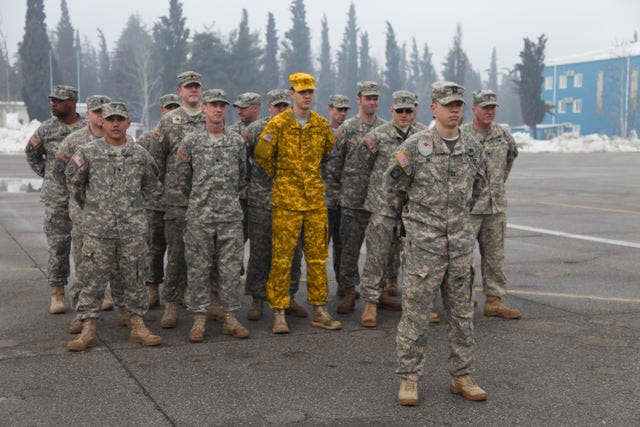Rich Stowell
 Milan Vego of the Naval War College wrote a wonderful essay that appeared in Joint Forces Quarterly.
Milan Vego of the Naval War College wrote a wonderful essay that appeared in Joint Forces Quarterly.
“On Military Creativity” explores the benefits and risks of thinking outside the box in a military context. It reminded me of a wonderful post I wrote for “My Public Affairs” several years ago.
My complaint, at the time, is reflected in Vego’s essay: military institutions are designed to prevent creativity, and instead promote group think. But military successes usually result from leaders who are courageous enough to challenge convention and think outside the box.
Of course, 95% of the time, the Army is very similar to any other major organization. It needs to finance its operations; hire, retain, and train its employees; acquire and maintain equipment; develop and execute strategies; plan ahead; and sell itself to the public.
But militaries are designed for combat, even if combat is an exception to their daily organizational reality. So while the Army, for instance, may thrive under its norms and conventions, when its Soldiers are under fire they must think quickly and creatively to prevail.
In combat, everything is creativity. Drills and routine training merely give a Soldier the tools he needs to win the fight. Such training is applied almost scientifically, while their application in battle resembles art.
Of course there is a balance.
Vego makes the case that war is an art, and faults those who view it as a science for the military’s dogmatic resistance to innovation. “The art of warfare rests on the freest application of its fundamentals under constantly changing conditions,” writes Vego. But the influential British military theorist J.F.C. Fuller (to whom Vego refers in his essay as an exemplar of a military innovator) believed that war could ultimately be studied scientifically.
Though Fuller’s Foundations of the Science of War was panned, it was a robust attempt to look at warfare systematically. Science, Fuller argued, doesn’t preclude using creativity:
Poetry, painting, and music may be arts, but they are based on the sciences of language, of optics, and of acoustics. True, it is possible to be an artist without being a scientist, it is possible to theorize without knowing much, but this does not abrogate science, which, as I shall explain later on, is nothing else than true knowledge in place of haphazard knowledge, logical thinking in place of chaotic thinking…
In the Battle of Kamdesh, as told by Jake Tapper in The Outpost, Soldiers were faced with scenarios that resisted traditional thinking. Taliban forces descended on COP Keating with a plan that rendered the U.S. forces’ typical response impossible or useless.
It was up to quick thinking, bold, and creative Soldiers to push back the enemy after it had breached the wire.
There is certainly a lot more that can be written about creativity in combat. I think the biggest impediment to many of the ideas that might be offered is the fact that the military operates under ordinary circumstances, but is put to the test and evaluated in extraordinary circumstances.
No comments:
Post a Comment